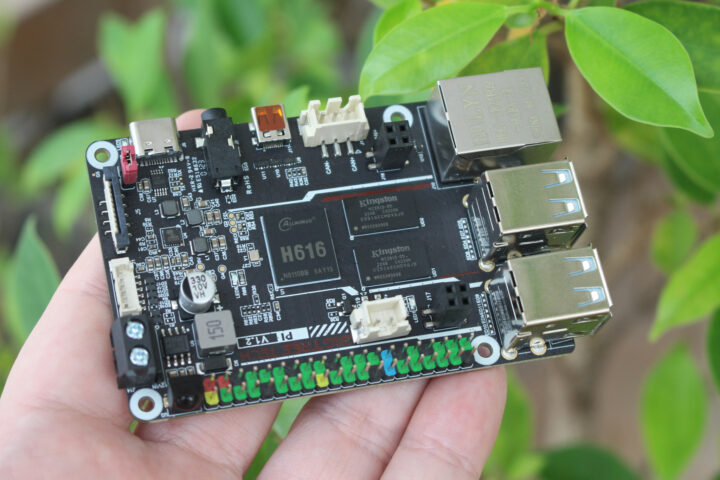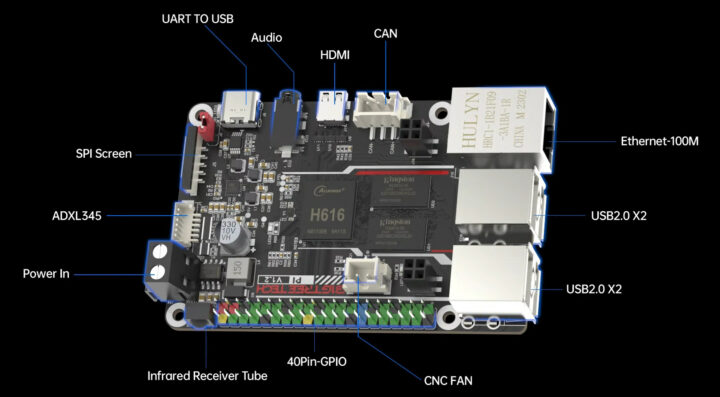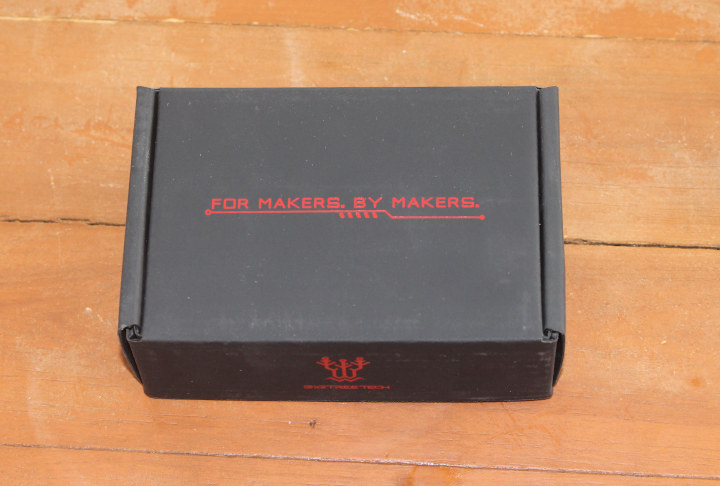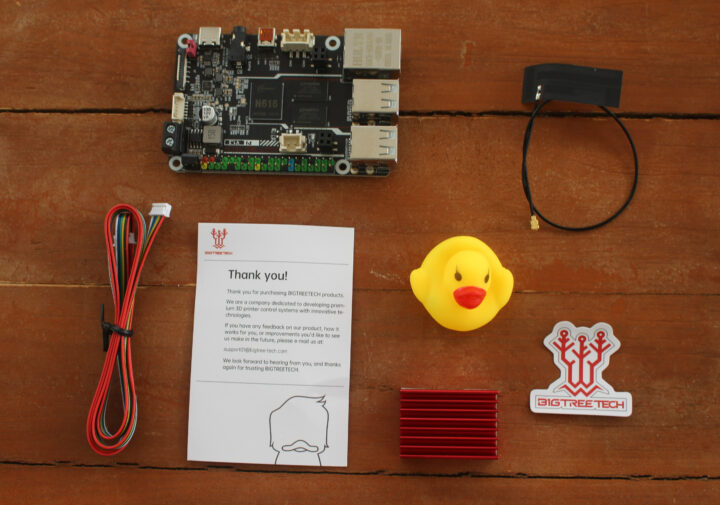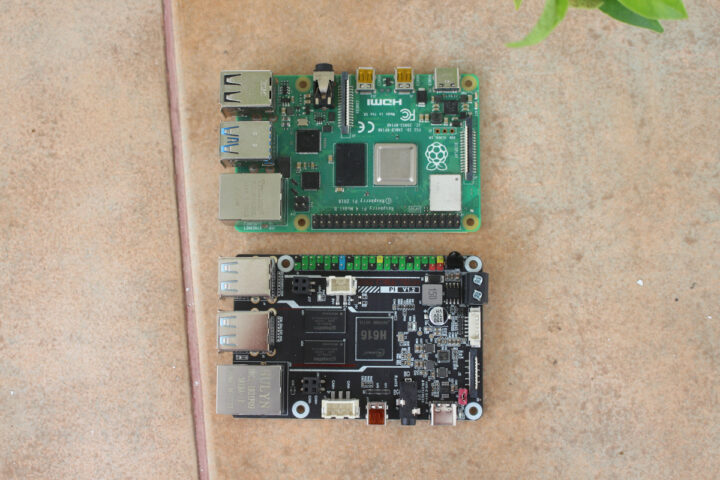BIGTREETECH Pi v1.2, also known as the BBT Pi v1.2, is a Raspberry Pi-sized Allwinner H616 single board computer (SBC) specially designed for 3D printers with many of the same ports as the Raspberry Pi 3/4, but also features 12V-24V DC power input and connectors for the ADXL345 3-axis accelerometer, CAN Bus, and so on.
The board is equipped with 1GB RAM, a microSD card slot to run the operating system (Debian 11 with Klipper), a 4K capable micro HDMI port, Fast Ethernet and WiFi 4 networking, four USB ports, and the usual 40-pin Raspberry Pi header.
BTT Pi specifications:
- SoC – Allwinner H616 quad-core Arm Cortex-A53 @ 1.5GHz with Arm Mali G31 MP2 with support for OpenGL ES 3.2
- System Memory – 1GB DDR3L SDRAM
- Storage – MicroSD card slot
- Video Output
- Micro HDMI 2.0a port up to 4Kp60 resolution
- SPI port for display
- Audio – 3.5mm audio jack
- Networking – 10/100 Mbps Ethernet and 2.4 GHz WiFi 4 module with external antenna
- USB – 4x USB 2.0 Ports, 1x USB Type-C for power and UART console
- Serial – 3-pin CAN Bus connector for the U2C expansion module
- Expansion
- 40-pin GPIO
- ADXL345 3-axis accelerometer connector (SPI)
- Misc – Built-in IR receiver, 5V CNC fan header
- Power Supply
- 5V DC via USB Type-C port
- 12V to 24V DC via 2-pin terminal block
- Dimensions – 85 x 56 mm (3x mounting holes are in the same location as the Raspberry Pi)
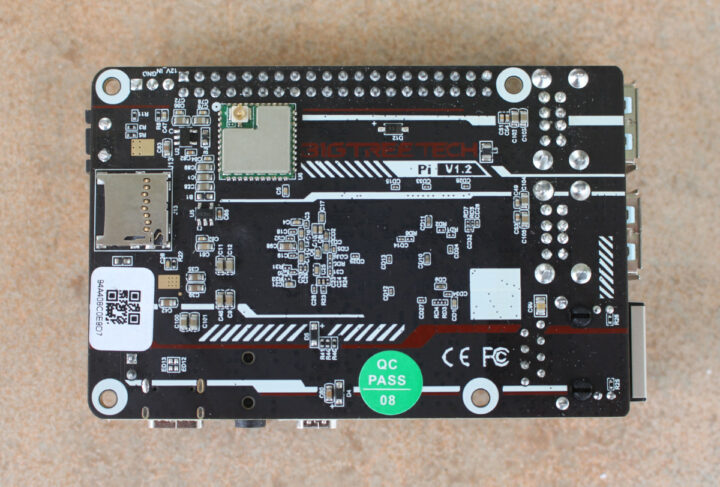
The board is software-compatible with the BIGTREETECH CB1 system-on-module and BTT Pi runs the CB1 image based on Debian 11, Linux 5.16, and Klipper open-source 3D printer software. You’ll find the latest version of the OS image on GitHub.
BIGTREETECH sent me a sample of the BTT Pi SBC, let’s have a quick look at the content of the package.
The board ships with the wireless antenna, some wires for the ADXL345 3-axis accelerometer module (not included), a Thank you note, a plastic duck, a red heatsink that will cover the Allwinner processor and RAM chips, and a sticker.
While the BIGTREETECH Pi v1.2 does have the same size as the Raspberry Pi 4 Model B and the USB and Ethernet ports are arranged in the same way, the comparison stops there, and the BBT Pi v1.2 board won’t fit in most Raspberry Pi enclosures. You should still be able to mount it on a chassis with holes reserved for the Raspberry Pi 4, but only three holes are aligned the same way which should probably be enough for most installations.
BIGTREETECH Pi V1.2 board is sold on Aliexpress for $33.68 including shipping, on Amazon ($45.99), as well as on biqu.equipment. I’ll probably review the board as an SBC as the company also sent the software-compatible Pad 7 with a 7-inch touchscreen display and the BIGTREETECH CB1 system-on-module, which I’ll cover later today or tomorrow, and review with the Creality Ender-3 S1 Pro 3D printer or another 3D printer.

Jean-Luc started CNX Software in 2010 as a part-time endeavor, before quitting his job as a software engineering manager, and starting to write daily news, and reviews full time later in 2011.
Support CNX Software! Donate via cryptocurrencies, become a Patron on Patreon, or purchase goods on Amazon or Aliexpress


